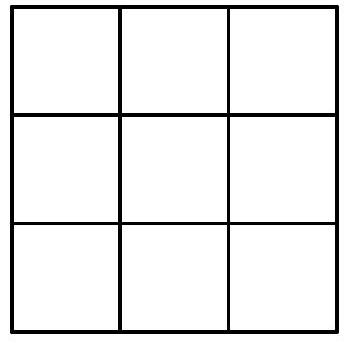Appearance
question:Given the inequality |x-m| < |x| has the solution set (1, +infty). (1) Find the value of the real number m; (2) If the inequality frac {a-5}{x} < |1+ frac {1}{x}| - |1- frac {m}{x}| < frac {a+2}{x} holds true for x in (0, +infty), find the range of values for the real number a.
answer:Solution: (1) From |x-m| m^2. Since the solution set of the inequality |x-m| 3, and a-5 leq -1, therefore the range of a is boxed{1 < a leq 4}.
question:7.4. What can be the sum of the digits of a number divisible by 7?
answer:Answer. Any natural number, greater than or equal to 2.Solution. Note that the numbers 21 and 1001 are divisible by 7, and the sums of their digits are 3 and 2, respectively. Therefore, to get a sum of digits equal to an even number n, we need to take a number whose decimal representation consists of frac{n}{2} groups of digits 1001. Accordingly, to get a sum of digits equal to an odd number 2n+1, we need to take a number whose decimal representation consists of frac{n}{2}-1 groups of digits 1001 and one group of digits 21. A sum of digits equal to 1 cannot be obtained, because powers of ten are not divisible by 7.
question:Let triangle ABC have sides a, b, c opposite to the internal angles A, B, C respectively. Given that sin A = 3sin B, C = frac{π}{3}, and c = sqrt{7}. Find:(1) a;(2) sin A.
answer:To solve the given problem, we follow the steps outlined in the solution and provide a detailed breakdown: For part (1) - Finding aGiven that sin A = 3sin B and using the Law of Sines, we can express this relationship in terms of the sides opposite these angles, which gives us:[ frac{a}{sin A} = frac{b}{sin B} ]Given sin A = 3sin B, we substitute to find:[ a = 3b ]Next, we apply the Law of Cosines to find a relationship involving c^2:[ c^2 = a^2 + b^2 - 2abcos C ]Substituting C = frac{pi}{3}, c = sqrt{7}, and a = 3b into the equation, we get:[ 7 = 9b^2 + b^2 - 2 cdot 3b cdot b cdot frac{1}{2} ]Simplifying, we have:[ 7 = 10b^2 - 3b^2 ][ 7 = 7b^2 ][ b^2 = 1 ]Thus, b = 1. Substituting back to find a, we get:[ a = 3b = 3 times 1 = 3 ]So, the value of a is boxed{3}. For part (2) - Finding sin AGiven a = 3, C = frac{pi}{3}, and c = sqrt{7}, we use the Law of Sines to find sin A:[ frac{a}{sin A} = frac{c}{sin C} ][ sin A = frac{a sin C}{c} ]Substituting the given values:[ sin A = frac{3 times frac{sqrt{3}}{2}}{sqrt{7}} ][ sin A = frac{3sqrt{3}}{2sqrt{7}} ][ sin A = frac{3sqrt{21}}{14} ]Therefore, sin A is boxed{frac{3sqrt{21}}{14}}.
question:1. Given the identitybegin{array}{l}x^{4}+a_{1} x^{3}+a_{2} x^{2}+a_{3} x+a_{4} =(x+1)^{4}+b_{1}(x+1)^{3}+b_{2}(x+1)^{2}+ quad b_{3}(x+1)+b_{4} .end{array}Express b_{3} in terms of a_{1}, a_{2}, a_{3}, a_{4}, then b_{3}=qquad
answer:-1 .-4+3 a_{1}-2 a_{2}+a_{3} text {. }Substituting x=-1 into the known identity, we getb_{4}=1-a_{1}+a_{2}-a_{3}+a_{4} .Rearranging and simplifying, we havebegin{array}{l}left(x^{4}-1right)+a_{1}left(x^{3}+1right)+a_{2}left(x^{2}-1right)+a_{3}(x+1) =(x+1)^{4}+b_{1}(x+1)^{3}+b_{2}(x+1)^{2}+b_{3}(x+1),end{array}which isbegin{array}{l}(x+1)left[(x-1)left(x^{2}+1right)+right. left.a_{1}left(x^{2}-x+1right)+a_{2}(x-1)+a_{3}right] =(x+1)left[(x+1)^{3}+b_{1}(x+1)^{2}+right. left.b_{2}(x+1)+b_{3}right] . text { Hence }(x-1)left(x^{2}+1right)+a_{1}left(x^{2}-x+1right)+a_{2}(x-1)+a_{3} =(x+1)^{3}+b_{1}(x+1)^{2}+b_{2}(x+1)+b_{3} .end{array}Substituting x=-1 again, we getb_{3}=-4+3 a_{1}-2 a_{2}+a_{3} .
question:2. Solve the inequality log _{x}(6 x-5)>2.#
answer:# Solution:log _{x}(6 x-5)>2. Domain: x in(5 / 6 ; 1) cup(1 ;+infty) . log _{x} frac{x^{2}}{6 x-5}1end{array} Leftrightarrowleft{begin{array}{c}5 / 60end{array} Leftrightarrowleft{begin{array}{c}5 / 65end{array} Leftrightarrow 5 / 6<x<1right.right.right..2) left{begin{array}{c}1<x<+infty, frac{x^{2}}{6 x-5}<1end{array} Leftrightarrowleft{begin{array}{c}1<x<+infty, x^{2}-6 x+5<0end{array} Leftrightarrowleft{begin{array}{c}1<x<+infty, 1<x<5end{array} Leftrightarrow 1<x<5right.right.right..Answer: x in(2 / 6 ; 1) cup(1 ; 5).
question:The 9 squares of a 3 times 3 board, as shown in the figure below, must be painted in such a way that in each row, each column, and each of its two diagonals, there are no squares of the same color. What is the minimum number of colors needed for this painting?#
answer:SolutionLet's denote the colors of the main diagonal by the numbers 1, 2, and 3, as shown in the first figure.| 1 | | X || :--- | :--- | :--- || | 2 | || Y | | 3 |Now consider the colors of the two corner squares of the secondary diagonal, denoted by X and Y in the first figure. Since X is in a row that contains the color 1, a diagonal with the color 2, and a column with the color 3, the color X is not in the set {1,2,3}. By the same argument, the color Y is also not in this set. Moreover, since X and Y are on the same diagonal, they must represent different colors. Therefore, we need at least 3+2=5 colors. To ensure that 5 is the minimum number, it suffices to exhibit a configuration with this number of colors. This is done in the next figure, where each number represents a color.| 1 | 3 | 5 || :--- | :--- | :--- || 3 | 2 | 1 || 4 | 1 | 3 |